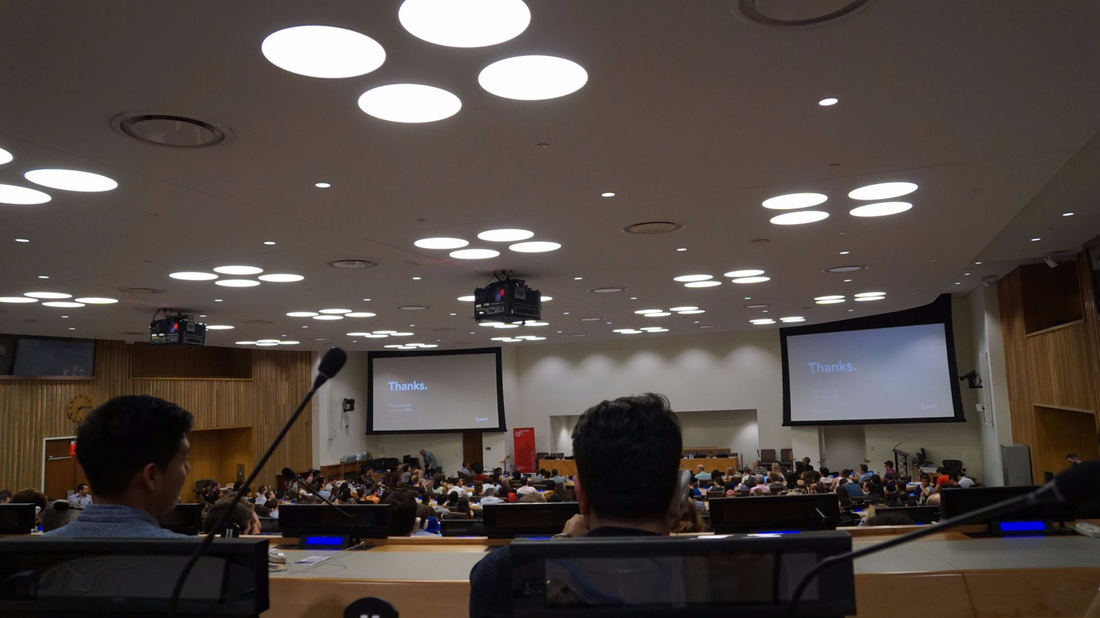The Design Driven NYC meetup on May 3rd brought an impressive lineup. The speakers were Vítor Lourenço, Partner at Expa and first designer at Twitter, Bradford Shellhammer, Head of Personalization and Engagement at eBay, Jonathan Smiley, Product Designer at Facebook and Deepa Subramaniam, VP of Product at Kickstarter.
In case you missed it, or if you just want a recap, we’ve summarized key takeaways from some of the talks.
It is difficult to create a product that works for everyone and compromises will usually need to be made in 5 different areas:
Design
- Compromises will be made when designing an all-encompassing product that is visually aesthetic, functional and user-friendly.Technology
- There will be software dependencies that are difficult to develop or change.Business
- Compromises will have to be made when making a choice between benefitting the users or the company’s bottom line.Political
- There will be organizational dynamics and colleagues with different working styles, which will result in compromises that need to be made in design.Ego
- There will be times when you need to be comfortable with the fact that you may not have created the right design.
While compromising, there will be times when you start to doubt yourself but the solution is for you to be clear about your role. It’s key to figure out when and how to compromise. Over time, you will develop good instincts about what users are looking for and bring key priorities for your environment to the table instead of bringing everything to the table.
Though Deepa is currently with Kickstarter, she spoke about her experiences as Director of Product at Hillary for America. Deepa shared with us some tips for building good team dynamics, executing efficient user testing and creating effective engagement.
Team Dynamics
- The best outputs will usually be produced under difficult circumstances.
- Teams which are integrated and focused on their prioritization produce the best results.
- Collaboration should happen regularly by constantly sharing space physically and where necessary, virtually.
- Diversity and inclusion are also key to building good rapport within the teams. Creating an inclusive and well-represented team with diverse backgrounds, will result in better outputs through stronger collaboration.Testing
- Use A/B testing and data-driven testing to drive roadmap prioritization and show impact.
- Prioritize ideas based on timing instead of significance.
- Test ideas that are “evergreen”, which are valuable for a lengthy time instead of moment-based ideas.Engagement
- Get users to take action by being direct and make one clear ask instead of distracting them with multiple vague questions.
- Provide a guide for your call-to-actions and justify their significance to users.
With experience as the first designer of Twitter and a partner at startup studio, Expa, Vítor explained the lessons he learned from launching more than 10 companies at Expa in 3.6 years.
Find something that sucks
- You need to find something that you are really upset about before tackling the issue with a solution.Define key metrics for success
- This keeps you attached to the problem you are about to solve. You will need to figure out one number that really matters and make sure that the number grows over time. During his early days at Twitter, the team based most of their decision on intuition without well defined instrumentation for a metric, which resulted in several changes in direction.Build focused prototypes
- Instead of doing ten different things, pick one thing to focus on. Product needs to have a strong core and people often spend time working on ideas without a solid core.Tell a great story
- When possible, invest in a good domain and name right from the beginning. Branding is important and it is not only about the name but how your consumers experience your product and its story.Use the scientific method
- Carry out multiple tests for product market fit. Create a hypothesis, create your product and test it on users through a/b testing and experiments, review the results and come to a conclusion.
















